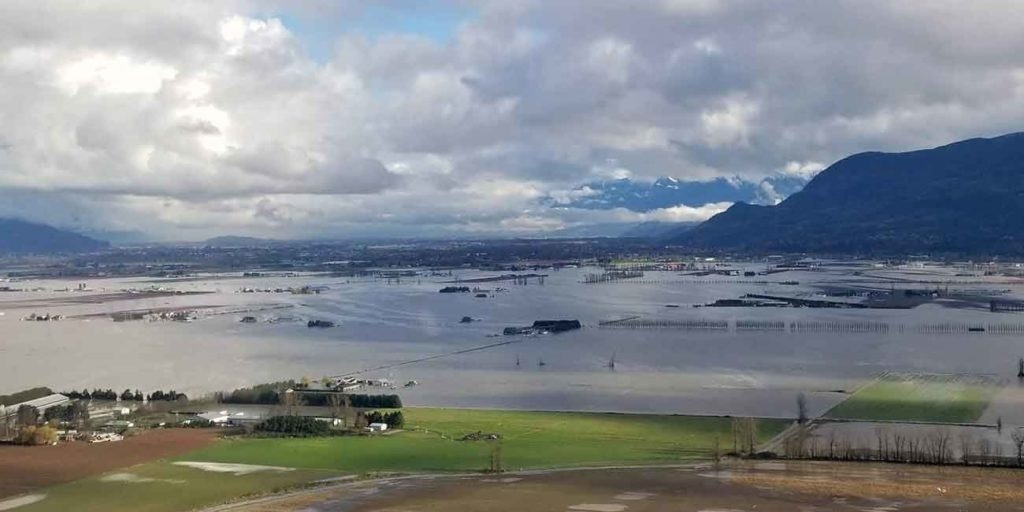It is time to adopt more sustainable forestry policies and practices and acknowledge healthy forests' role in reducing the world’s rising flood risk.
 B.C.’s Fraser Valley in November 2021. Image Credit: UBC Applied Science
B.C.’s Fraser Valley in November 2021. Image Credit: UBC Applied Science
Researchers from The University of British Columbia (UBC) have made this statement clear in a study with peer review that was just released in the journal Science of the Total Environment.
After synthesizing decades’ worth of hydrology research, Dr. Younes Alila, a Professor in the faculty of forestry and a hydrologist, and Henry Pham, his doctoral student, discovered that many of them “severely and consistently underestimated” the effect of forest cover on flood risk.
It resulted in either sound or inadequately informed forest management policies and practices.
Cause and Effect
According to Dr. Alila, scientists have adhered to a “deterministic” approach for over a century. This is like playing a strategic board game and analyzing every move separately, concluding, “If I move here, then I should win.” The game can be altered by the dice roll, the cards obtained, and the actions of the opponents, all of which are not considered.
A deterministic method would examine the logging alone and attempt to determine its direct effect to understand how it can raise flood risk. However, several factors, including the amount of snow on the ground, whether it is melting, the rate of rainfall, and the features of the surrounding terrain, affect the likelihood of flooding. These variables interact in intricate ways throughout time.
A “probabilistic” method considers each one of them and yields a more comprehensive picture of flood danger. It is similar to a shrewd player of a board game, taking into account all the factors rather than just one.
The probabilistic approach is already well established in other disciplines such as climate change science. It is the most accurate method for evaluating the effects of deforestation on floods.
Henry Pham, Student, University of British Columbia
Forests Can Lower Flood Risk
According to Dr. Alila, the probabilistic framework is intended to comprehend and predict, for example, the extent to which land development, logging, or climate change could have been responsible for the Fraser Valley floods of 2021. The methodology could be expanded to explore the factors contributing to flood risk in more cities and areas.
In B.C. alone, the flood risk is escalating as we continue to lose forest cover due to ongoing large-scale logging and wildfires. If we want to mitigate the costs of disasters like the 2021 flooding in the Fraser Valley or the 2018 flooding in Grand Forks, we need to change the way we manage our forest cover. Regenerative practices such as selective logging, small patch cutting, and other alternatives to clear-cutting are an important way forward.
Dr. Younes Alila, Professor, Faculty of Forestry, University of British Columbia
Pham pointed out that clear-cut logging results in more frequent and severe floods, which can have detrimental effects.
Pham added, “They can negatively impact river ecosystems, degrade water quality in community watersheds, and cause sedimentation issues downstream. Thousands of lives and many ecosystems further downstream of clear-cut logging stand to be affected.”
Dr. Alila concluded, “Forests serve as the most effective natural defense against a global escalating flood risk attributed to factors such as climate change. Now is the time for water and forest management policies to start being guided by the most up-to-date and defensible science.”
Journal Reference:
Pham, H. C., et. al. (2024) Science of forests and floods: The quantum leap forward needed, literally and metaphorically. Science of the Total Environment. doi:10.1016/j.scitotenv.2023.169646